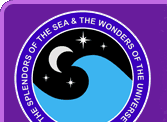Pronunciation:
(moh-NOS-er-us)Abbreviation:
MonGenitive:
MonocerotisRight Ascension:
7 hoursDeclination:
-5 degreesArea in Square Degrees:
482Crosses Meridian:
9 PM, February 20Visible Between Latitudes:
75 and -85 degreesThe constellation Monoceros, the unicorn, is visible in the northern hemisphere in winter. It is visible at latitudes between 75 degrees and -90 degrees. It is a medium-sized constellation covering an area of 482 square degrees. It ranks 35th in size among the 88 constellations in the night sky. It is bordered by Orion to the west, Gemini to the north, Canis Major to the south and Hydra to the east.
There are no myths associated with Monoceros. It is one of 12 constellations named by the Dutch astronomer Petrus Plancius based on observations by Dutch navigators. Plancius included it on a celestial globe in 1612. He originally called it Monoceros Unicornis. It was created to fill a large gap between the constellations Orion and Hydra. The German astronomer Jakob Bartsch named it Unicornu in his star chart published in 1624. It represents a classic unicorn, a horse with a single horn protruding from its forehead. The faint stars of Monoceros make its shape difficult to discern. It is often overlooked since it is surrounded on all sides by the much brighter constellations Orion, Canis Major, Canis Minor, and Gemini.
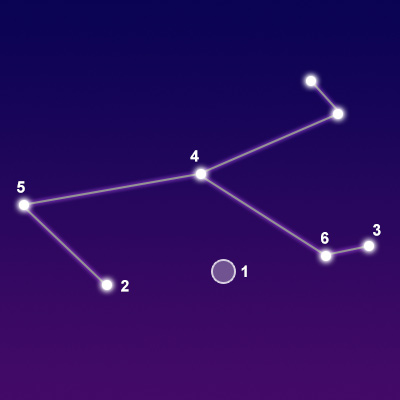
points of interest below © Sea and Sky
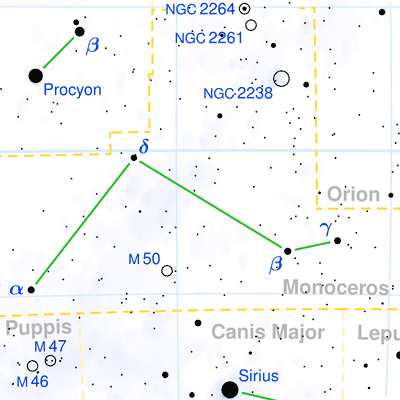
© Torsten Bronger CC BY-SA 3.0
Alpha Monocerotis
Gamma Monocerotis
Delta Monocerotis
Zeta Monocerotis
Beta Monocerotis
N/A
N/A
N/A
N/A
N/A
Orange Giant Star
Orange Giant Star
White Dwarf Star
Yellow Supergiant Star
Triple Star System
3.94
3.98
4.15
4.36
4.60
Monoceros is a dim constellation with no stars brighter than magnitude 3. The brightest star in the constellation is Alpha Monocerotis with a visual magnitude of only 3.94. It is an orange giant star located about 144 light years from Earth. The second brightest star is Gamma Monocerotis with a magnitude of 3.98. It is also an orange giant star that lies approximately 645 light years from our solar system. Delta Monocerotis is the third brightest star with a magnitude of only 4.15. It is a white dwarf star located some 375 light years away. Another point of interest in this constellation is a star known as Beta Monocerotis. This is a unique triple star system. The three stars in the system form a tiny triangle when seen through a small telescope.
Monoceros contains one Messier object, M50. It is an open cluster of about 200 stars. In addition, this constellation contains a large number of fascinating deep-sky objects. The Rosette Nebula is an emission nebula known for its beautiful colors and patterns. NGC 2244 is an open star cluster located within the Rosette Nebula. The Christmas Tree Cluster and Cone Nebula (NGC 2264) is an open cluster of stars along with a cone-shaped dark nebula. Hubble’s Variable Nebula (NGC 2261) is a variable nebula with a ghostly veil shape. The Red Rectangle Nebula is a protoplanetary nebula with a unique geometric square shape. The Seagull Nebula is an emission nebula that covers a large area of the sky. With the exception of M50, these objects are extremely dim and can only be seen with a large telescope.
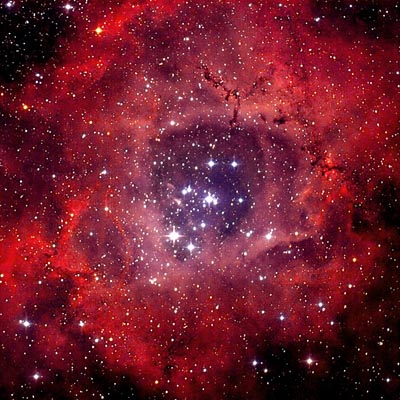
© Andreas Fink / CC BY 3.0
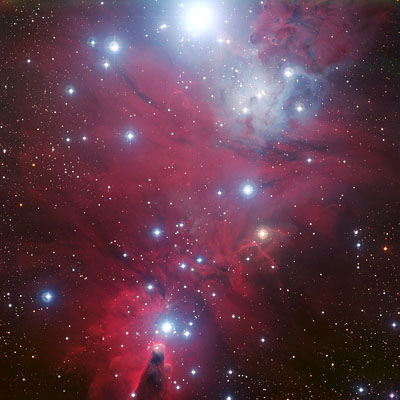
© European Southern Observatory / CC BY 3.0

© Hubble Space Telescope / CC BY 3.0
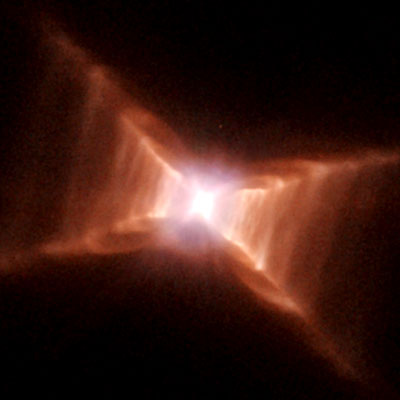
the Hubble Space Telescope
